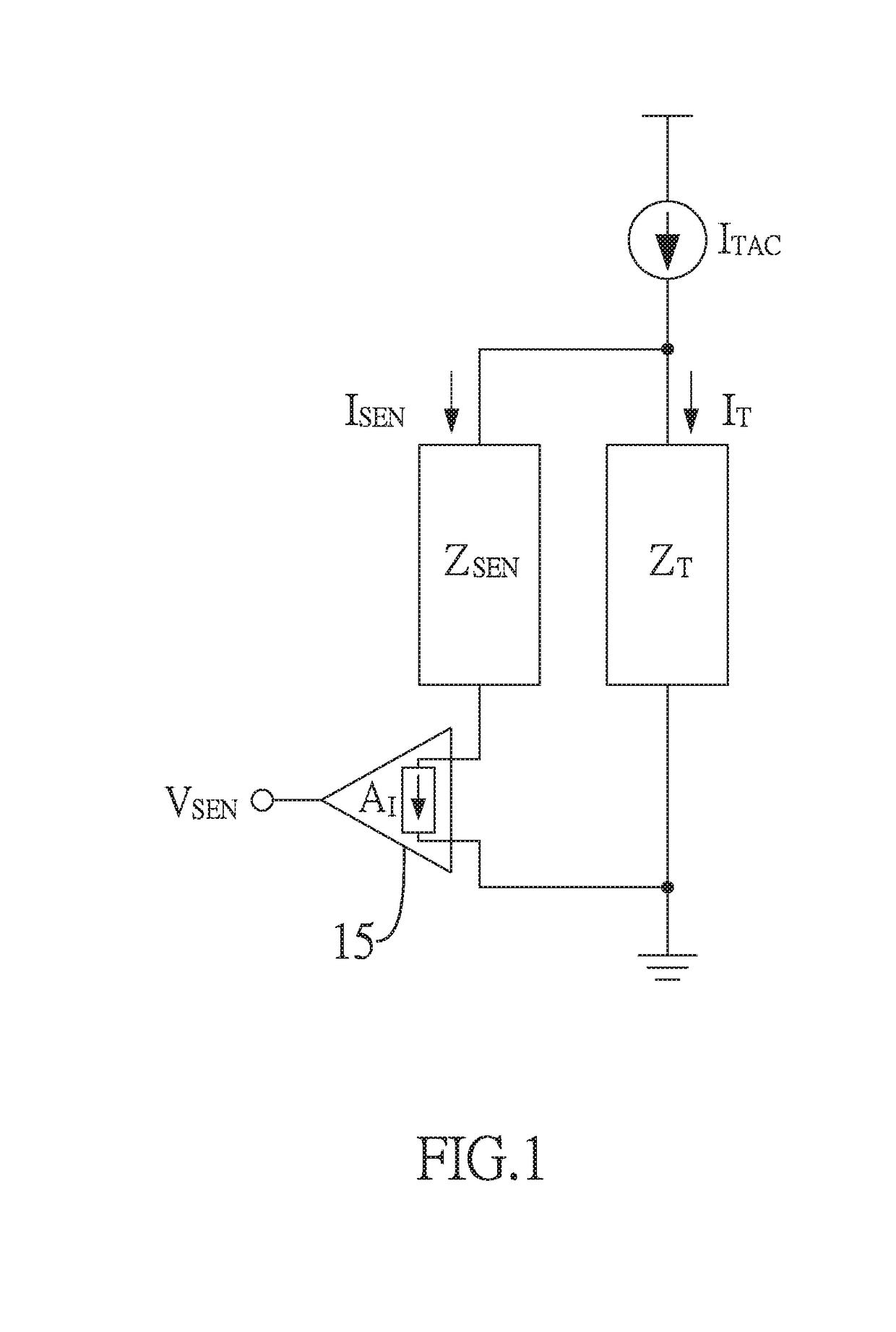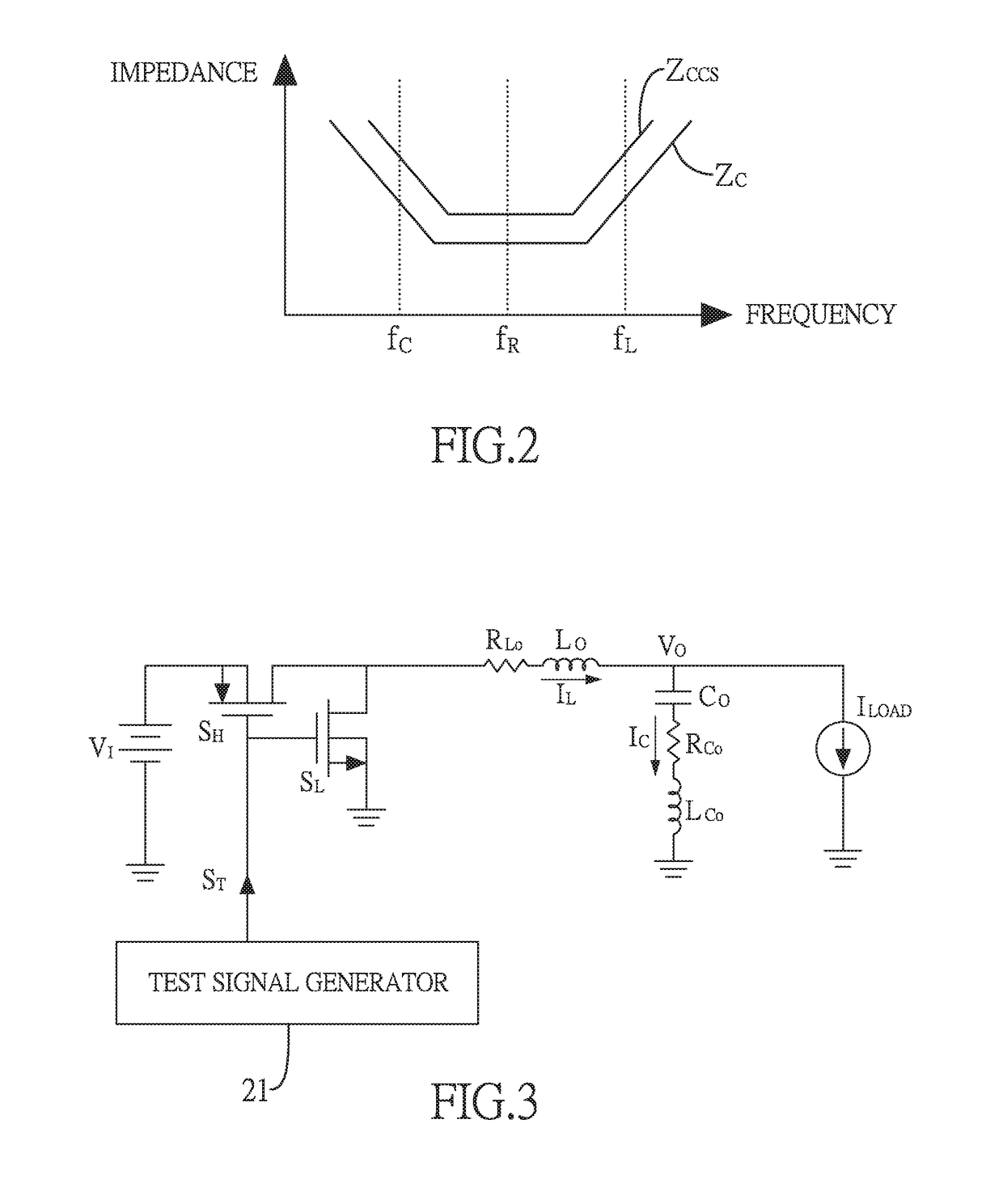Method and apparatus of calibrating impedance-matching current sensor
a current sensor and impedance matching technology, applied in the field of methods and apparatus of calibrating current sensors, can solve problems such as unreliability and instability, inability to effectively detect the variation of output capacitors, and inability to adjust the output voltage.
- Summary
- Abstract
- Description
- Claims
- Application Information
AI Technical Summary
Benefits of technology
Problems solved by technology
Method used
Image
Examples
Embodiment Construction
[0041]Reference will now be made to the drawing figures to describe the present disclosure in detail.
[0042]FIG. 1 shows a schematic of calibrating an impedance-matching current sensor (IMCS) of the present disclosure. The IMCS with a sense impedance ZSEN is connected in parallel to a device under test (DUT) and an equivalent impedance of the DUT is expressed as a target impedance ZT. It is assumed that the sense impedance ZSEN is equal to KI times of the target impedance ZT, i.e., ZSEN=KI×ZT.
[0043]In addition, an alternating-current (AC) test current ITAC is provided, and a part of the AC test current ITAC, i.e., a target current IT, flows through the DUT and the other part of the AC test current ITAC, i.e., a sense current ISEN flows through the IMCS. Therefore, under a certain frequency f0, the following relationship is satisfied:
ZSEN(f0)=KI×ZT(f0)
[0044]Correspondingly, a relationship between the target current IT and the sense current ISEN under the certain frequency f0 is satisf...
PUM
 Login to View More
Login to View More Abstract
Description
Claims
Application Information
 Login to View More
Login to View More - R&D
- Intellectual Property
- Life Sciences
- Materials
- Tech Scout
- Unparalleled Data Quality
- Higher Quality Content
- 60% Fewer Hallucinations
Browse by: Latest US Patents, China's latest patents, Technical Efficacy Thesaurus, Application Domain, Technology Topic, Popular Technical Reports.
© 2025 PatSnap. All rights reserved.Legal|Privacy policy|Modern Slavery Act Transparency Statement|Sitemap|About US| Contact US: help@patsnap.com



